For decades, the treatment of foot varicose veins remains one of the radical methods for eliminating the disease and its complications.Thanks to modern technology and improving operating techniques, it is truly effective in therapeutic and cosmetic terms, it is carried out easily and without pain as possible, well received by the patient and does not cause prolonged defects.
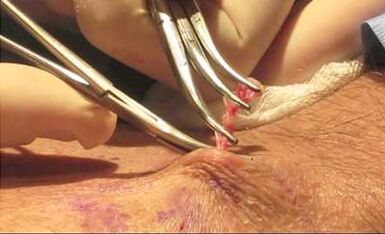
Usually, about 30% of blood from the lower legs flow through a small subcutaneous river, which combines in two central veins - large and small subcutaneous veins.These vessels are directly connected to deep veins, of which 70% of blood flow.In place of these compounds there are valves that pass through the blood only from the surface to the deep.There are also dozens of small veins, as well as connecting a shallow venous network.They also have valves that pass through blood in one direction.The main cause of varicose veins is the failure of the vein valve, leading to improper blood discharge: from the veins to the surface, which increases the pressure in it and leads to the expansion of both small vessels and central veins.The main goal of which surgical treatment is intended for varicose veins from the lower leg:
- The removal of blood stagnation in the variable surface veins, which will prevent the development of chronic vein deficiency and trophic disorders on the skin.
- Removes vessels and defective varieties that represent cosmetic defects.
- The removal of blood release from deep veins - ligation and perforant intersection (clan) veins, as well as large and small subcutaneous veins in places of their relationship with the deepest.
- Prevention of repeated venous events.
Separate places in the treatment of female varicose vein surgery at the bottom of the extreme of cosmetic surgery.After such intervention, not only the veins are pathologically altered, but also post -operative scars on the scalp, or they do not make it.To achieve the maximum cosmetic effect, surgical surgery for varicose veins is performed according to the following methods:
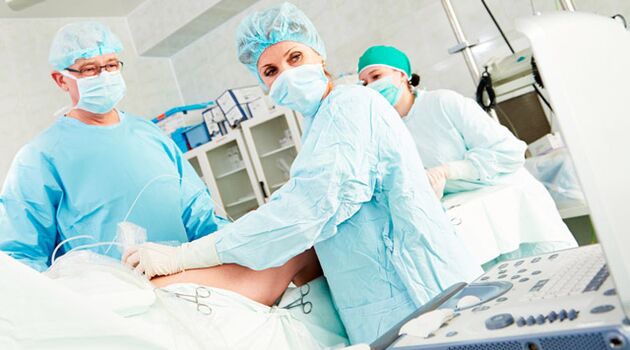
- Laser or frequency of radio ablation burning veins from the center of the large and small subcutaneous veins under the control of the ultrasound through the skin of the skin on the thighs or on the feet.
- Stem sclerobliteration and sclerotherapy - filling large and small subcutaneous veins, as well as all their river, even the smallest, with special medicine.
Wherever the treatment method is described, varicose veins are not removed, but turn from the blood vessels to a soft cicatricial fabric.Both physical influences (laser rays, radio frequency waves), and chemical compounds (sclerosants) destroy the inner layer of the veins.Thanks to this, it loses the lumen, glue and completely desolates from the blood, turning into a common connective tissue (cicatricial).Therefore, without the direct removal of the veins, all the goals are assigned to the rapid treatment of the vein in the lower leg - the changed vessel is eliminated, and the harmful consequences of venous deficiency is eliminated in it.The only cosmetic operation restrictions in the treatment of varicose veins in women may be small or limited to veins to 1-2 degrees.During pregnancy and in the early days of childbirth, surgical treatment is contraindicated with the exception of acute situations that require emergency intervention, for example, with ascending thrombophlebitis.This operation is limited to large subcutaneous venous clothing at its relationship to femoral (crossectomy).Consider the most common surgical intervention in the treatment of varicose veins from lower legs: laser ablation, endoscopic vein surgery and phlebectomy.The last is divided into the following types:
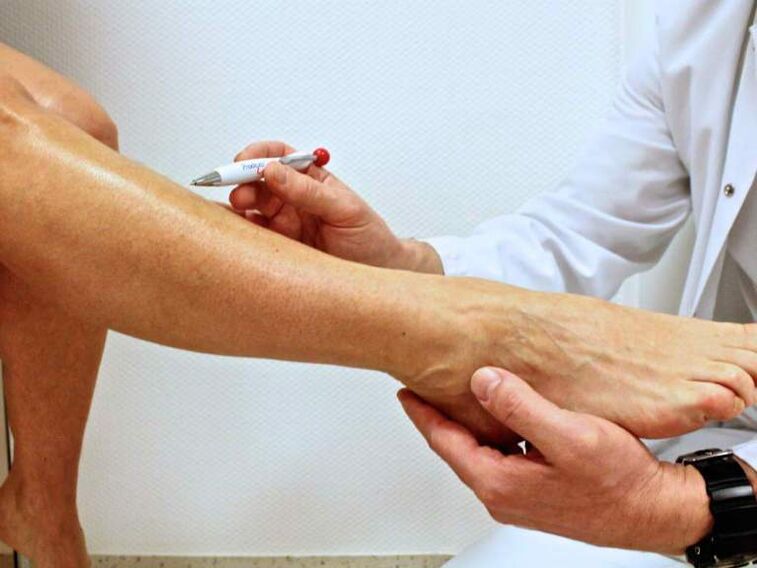
- classic operation, or complete or complete operation of trojanov-trendelenburg-bubko-narata;
- short stripping;
- Flebectomy.
Flebectomy
Removal, extraction of veins from under the skin is called phlebectomy.This is one of the first methods of surgical treatment for varicose veins from the lower leg.But today, phlebectomy is most commonly performed by phlebologists and vascular surgeons.There are three modifications and operating methods: full, short stripping, minafebectomy.Domestic surgeons call the classic phlebectomy of trojanov-trendelenburg-bubko-narat operations, and foreign writers with complete stripping.Intervention amount presented:
- As a large subcutaneous vein bandage at the meeting place, 2-3 cm on the thighs under the inguinal folds, in the thighs, through the slice.
- Its removal throughout the thigh to the foot using a special investigation through two skin wounds 1-2 cm along the deep surface near the knees and ankles.
- The removal of all varicose veins and small veins through a separate small incision is about 1-2 cm (they can from 5-6 to 10-20) with non-solvent perforant clothing.
- Sew all wounds with cosmetic stitches.
The most radical classical phlebectomy allows you to remove varicose veins, but the most traumatic of all available techniques.
Short stripping
With short stripping, not the whole subcutaneous vein is removed, but only the fragments, which are influenced by varicose veins, for example, only on the thighs or in the lower leg.Healthy segments are not removed.This reduces the trauma of intervention, but the risk of relapse is remained.Otherwise, operating operations are similar to classic phlebectomy.
Flebectomy
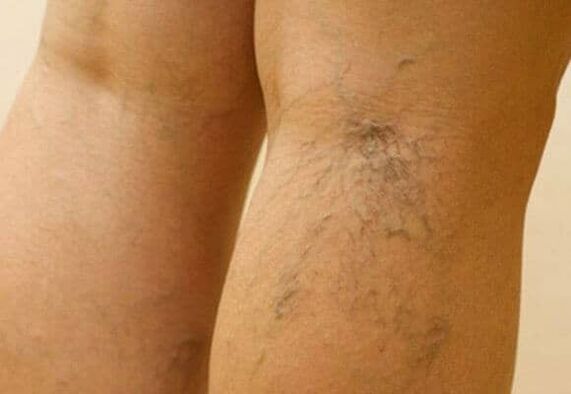
Innovative methodology to remove small varicose veins from large subcutaneous veins called phlebectomy.For its implementation, special tools (scalpels, hooks, clamps, spatulas) are required, with veins extracted through the skin of a few millimeters.It is not necessary to sew such skin defects, scars are not visible.Often, surgeons combine short or complete stripping of large subcutaneous veins with phleectomy.Such combination operations combine radicalism and adhesive trauma with good cosmetic effects.Laser ablation for varicose veins involves burning with laser beams from large subcutaneous veins throughout the side of its release.To do this, through the piercing of the skin or the ankle area into the lumen, a cow is introduced all over the length.Under the control of the ultrasound, the svetovod is slowly extracted.The laser beam, which acts on the vein wall, destroys the inner layer.As a result, Vienna falls and stops functioning, which is clearly visible to the ultrasound monitor.If not only the main vein is influenced by varicose veins, but also the stream, they are removed according to the phlebectomy method.
Diseases such as varicose veins are diseases characterized by vascular wall dysfunction and valve weakness in the veins, which cause stagnation in the blood vessels in the lower leg and the appearance of venous nodes.Such pathologies are quite dangerous and full not only with trophic disorders and the presence of inflammation, but also by lack of tissue nutrition.As a rule, this contributes to the formation of blood clots, which can spread through the bloodstream through the whole body and the appearance of a difficult appearance of trophic ulcer.In addition, the formation of thrombotic formations in vessels threatens the development of diseases such as thrombophlebitis.Therefore, if the patient has varicose veins from the lower leg, surgical treatment is mandatory, especially if the disease is launched.I would like to attract readers of our website that surgery for varicose veins from lower legs is a radical measure and, as a rule, is set if it cannot be done without it.Varicose disease from lower legs, surgical treatment involves several, most widely used in the choice of surgical practice for surgical treatment.This option is directly in the approach to eliminating vessels and veins affected at the lower leg.
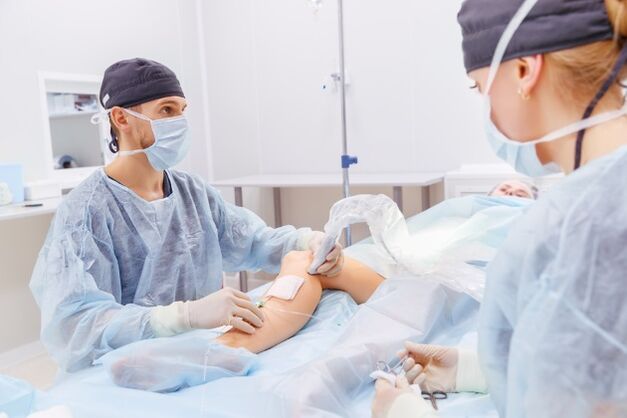
- The use of traditional phlebectomy in surgical practice for the treatment of radical varicose veins.This option is made in accordance with the methodology.This indicates the introduction of investigations designed specifically for such procedures in the lumen of the vessel and subsequent extracts from the veins through pre -skin slices.After surgery, the cord is done with cosmetic stitches, then making it almost invisible.
- Flebectomy - such surgery is required to eliminate small parts of the blood vessels and veins, which are affected by varicose veins.Note that this operation does not provide cutting on the skin, as some of the affected vessels or veins are removed in a puncture on the skin, which does not require applying stitches.
Note that surgical intervention in the treatment of certain diseases is indicated.However, varicose veins from the lower leg, surgical treatment is essential if the removal of blood clots and potential sources of the inflammation process is required.This approach will improve the patient's condition and help prevent severe and unsafe for the health and life of the patient's complications.Countries -countries that require immediate surgery for varicose veins include:
- the presence of thrombophlebitis or risk that causes its appearance;
- acute thrombophlebitis or frequent severity of the disease;
- extensive loss of blood vessels and veins;
- Feelings of fatigue and severity that are always disturbing to the feet, unpleasant pain, which indicates a clear varicose vein;
- The appearance of trophic ulcer.
There is also a specific contraindication for surgery for varicose veins:
- the second and third trimester of pregnancy;
- the presence of infectious diseases in the form of acute;
- exacerbate the pathology of the patient (diabetes, asthma, peptic ulcer and others);
- myocardial infarction, stroke;
- Dermatological problems.
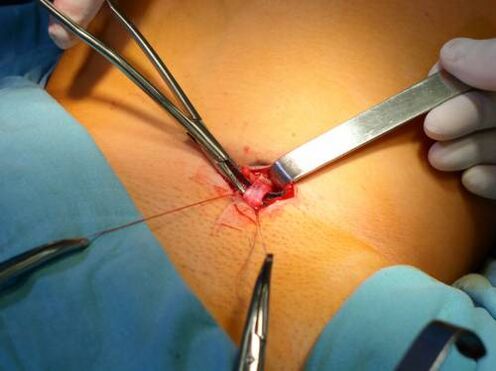
Disposal - As a rule, this method is used in front of a small section of the lesion, this is a more technique, unlike traditional phlebectomy.This method consists of stretching, through special hooks, the most venous nodes.There is also a subspecies of this technique - cryostopping, which implies a sinking of damaged vessels to cryosonda and subsequent removal.
Sclerosis - this technique provides the introduction of damaged sclerosant, a special material for "gluing" vessel walls between themselves.However, after the procedure, the veins do not stretch, but still exist, without fulfilling its purpose, even though blood flow through Vienna and stops, however, this function is performed by the collateral vessel, which does not violate the blood flow.The operation was carried out under the mandatory control of a specialist with ultrasound equipment.
Laser freezing - this method is the most innovative in the treatment of varicose veins and is the introduction of special equipment with laser radiation (thin probe) into the vein lumen.This device has a cauterizing effect on the blood vessel wall.
Consequences after surgery to get rid of varicose veins:
- The appearance of postoperative hematoma features -the surface of the body, which, as a rule, is resolved for several months;
- Also, after a few months, the seal under the skin located along the remote vessel is lost;
- Violation of the integrity of the lymph system (blood vessels) of the blood vessels, which can lead to unstable processes.As a result of such post -operations, conservatively treated, however, the lymph circulation is usually restored after several months;
- The possibility of damage to the subcutaneous nerve endings, which are indicated by the affected sensitivity of the epidermis of the postoperative symptoms after 5-6 weeks.
Sink
Surgery of varicose disease
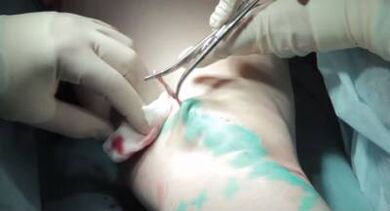
Traditionally, phlebectomy (crossectomy) is performed according to the bebcock method and consists of introducing investigations into the vein lumen with the next stretching completely throughout its length through the outdoor skin.Incision is injected at the end of the operation with cosmetic stitches.Flebectomy is used to remove very short areas from the veins, during surgery, the veins are not used.The cut on the skin is not carried out, and a piece of veins are removed through a thin puncture on the skin that does not require stitching.With a small area of damage to varicose veins, it is possible to perform a softer technique - stripping.This stretches with a thin hook only varicose nodes.The experience is carried out through two wounds on the skin with the next suturing.The various techniques are cryostopping - "sinking" veins to cryosonda using low temperatures, damaged nodes are also stretched.
Vienna sclerosion is the introduction of sclerosant into its lumen - a substance that "attaches" the vein wall to each other, but the veins remain far under the skin, not performing its function.The flow of blood through the veins stopped and through the collateral vessel, without breaking the flow of vein blood from the lower limbs.Vienna sclerosis is performed under ultrasound control.The freezing of varicose vein laser is the latest method in the flebology and consists of introducing a thin investigation into the lumen of the veins with laser radiation, which gives the effects of cauterizing on the vein wall.Radio frequency methods describe veins also refer to more modern treatment of varicose veins, but not all medical institutions are equipped with appropriate equipment.This technique consists of the effect of "cauterizing" on the vascular wall of high frequency radio waves.


















